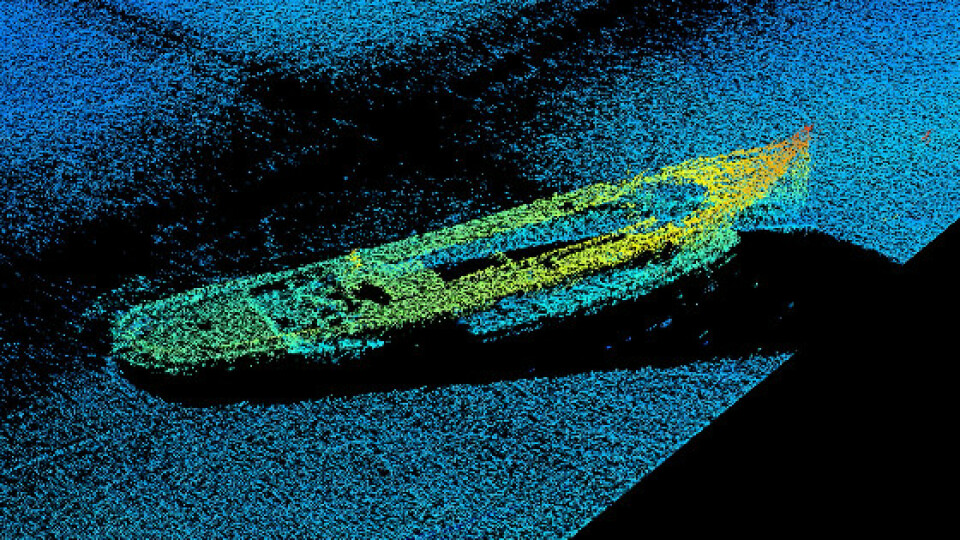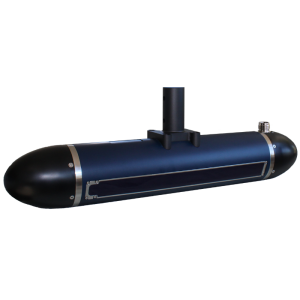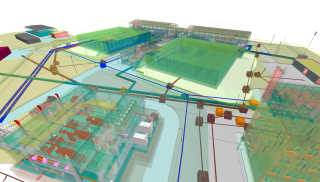
3DSS Imaging Application - Marine Archaeology
The wreck of the J.E. Boyden lays at the bottom of Lake Union, WA. Once a common sight along the shores of Puget Sound and Vancouver Island, the 85’ J.E. Boyden served as a cargo hauler and tug vessel for almost half a century during the final days of the tallship bulk carriers. Originally laid as one of the Seattle steamer fleet in 1888, the Boyden quickly made a name for herself as a powerful and capable tug, transporting coal, coke and lumber between ports on Vancouver Island and Puget Sound. The J.E. Boyden was also involved for many years as a tug for sailing ships entering the variable waters of the Strait of Juan de Fuca and Puget Sound, and assisted in the salvage efforts of the 256’ British iron ship Kilbrannan for several months in the spring of 1896. Scuttled in 1935 in 40’ of water, the J.E. Boyden is still well preserved and its integrity and orientation have been documented using 3D Sidescan Sonar technology from Ping DSP Inc.
The wreck of the J.E. Boyden lays at the bottom of Lake Union, WA. Once a common sight along the shores of Puget Sound and Vancouver Island, the 85’ J.E. Boyden served as a cargo hauler and tug vessel for almost half a century during the final days of the tallship bulk carriers. Originally laid as one of the Seattle steamer fleet in 1888, the Boyden quickly made a name for herself as a powerful and capable tug, transporting coal, coke and lumber between ports on Vancouver Island and Puget Sound. The J.E. Boyden was also involved for many years as a tug for sailing ships entering the variable waters of the Strait of Juan de Fuca and Puget Sound, and assisted in the salvage efforts of the 256’ British iron ship Kilbrannan for several months in the spring of 1896. Scuttled in 1935 in 40’ of water, the J.E. Boyden is still well preserved and its integrity and orientation have been documented using 3D Sidescan Sonar technology from Ping DSP Inc.
Data Acquisition
Lake Union is a small freshwater lake situated in Seattle, WA between Lake Washington and Shilshole Bay, Puget Sound with a surface area of 2.3 square kilometers and an average depth of 10m. The 3D Sidescan Sonar survey was conducted using a 3DSS-DX-450 sonar from Ping DSP mounted on a pole over the side of a 27’ Aluminum survey launch. The 3DSS sonar was mounted at a depth of 0.75m and the survey was conducted at a speed of 3kts. A single pass over the J.E. Boyden with the 3DSS-DX-450 Sonar produces a three dimensional image of the wreck with the acoustic illumination from the 3DSS revealing its true geometry, complete with shadows.
Discussion
Although the wheelhouse and cabin structure have long since disappeared, Figure 1 shows that the rear deck and ornate woodwork bordering the stern is still very much intact, as are the bow and the decks surrounding the well-defined hold. The image shows the J.E. Boyden lying in 12.46m water depth surrounded by flat, muddy terrain. Colours in the image are used to emphasize the vertical structure of the wreck which spans approximately 2m. Figures 2 and 3 provide a comparison between conventional 2D Sidescan imagery and 3D Sidescan imagery. Both images are colourized according to backscatter intensity and were acquired simultaneously on one pass with the 3DSS sonar. Figure 2 shows the typical slant range distortion in geometry that occurs in 2D Sidescan images while Figure 3 shows the true three dimensional geometry of the wreck. The slightly blurred appearance of the wreck in Figure 2 is a result of closely spaced echoes coming from different portions of the vertical structure and since these are separated in Figure 3 the image is cleaner. Both images also show scours lines in the muddy lakebed demonstrating that 3D Sidescan does not sacrifice image resolution. The 3D Sidescan view shown is a perspective view variation of the standard 2D Sidescan waterfall display, however, the 3D display can also be viewed from directly above to provide a geometrically correct two dimensional view (i.e. geometrically correct 2D Sidescan) The wreck can also be displayed from other viewpoints or even rotated in three dimensions. In addition to the subjective imagery advantages of 3D Sidescan, the other significant benefit is the quantitative measurement data that can be extracted from the 3D imagery.
Figure 4 shows a screen capture from 3DSS sonar real-time 3D Target Logger. The annotations in the figure show the vertical height above the lakebed, overall length, and the beam of the wreck and these correspond closely to the historical record. The captured three-dimensional image data is also tagged with position information, ping numbers and time and can also be saved to a catalog for later manipulation. Since the saved data is three dimensional, additional views and measurements can be made, colour scales adjusted and results can be exported for import into 3rd party software.
Conclusion
The wreck of the J.E. Boyden has been imaged using a new 3D Sidescan technology introduced by Ping DSP that provides geometrically correct high resolution three-dimensional imagery and provides a significant step forward in comparison with conventional 2D sidescan imagery. The 3DSS-DX-450 Sonar is a pole mounted 3D Sidescan and combines high resolution three dimensional imagery with time synchornous motion and navigation information that offers straight-forward and accurate documentation of underwater features and objects such as wrecks.
Acknowledgements
The survey of the J.E. Boyden was conducted in partnership with Biosonics Inc. of Seattle, WA using the Biosonics survey launch. The history and public domain photograph of the J.E. Boyden has been gathered from the work of DCS Films of Seattle, WA and the University of Washington archives.
Do you have questions about this case study?
Get in touch with Ping DSP, and they would be happy to answer any questions you have about pricing, suitability, availability, specs, etc.














